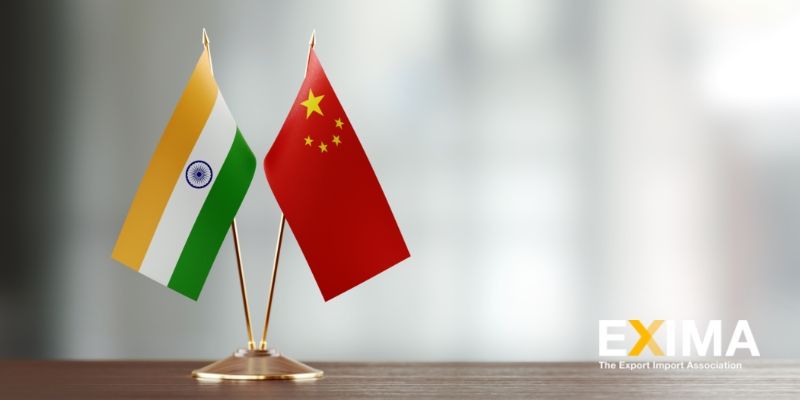The pharmaceutical industry plays a unique role in India's effort to develop a more substantial and robust economy. The only obstacle is the significant reliance on China for raw supplies.
China is a major supplier of active pharmaceutical ingredients (APIs), the substance that gives medicines their intended effects, to India, a major producer of pharmaceutical goods. Additionally, it is too reliant on China for key starting materials (KSM), the essential components used to build APIs.
According to the Research and Information System for Developing Countries (RIS) in New Delhi, 80–100% of the APIs for important medications are imported from China. For fermentation-based APIs like penicillin and erythromycin, it is 100 percent. According to a government statement issued in July 2020, China now accounts for 68% of all pharmaceutical imports into the country. According to statistics from the business, during the past ten years or more, this reliance has remained constant at 60 to 100%.
This demonstrates a dangerous tendency for a 1.4 billion-person country that strives to be independent and a manufacturing powerhouse. To be clear, India has the third-largest pharmaceutical market by volume and ranks 14th in market size. The pharmaceutical sector in India is presently valued at $50 billion, and the category is expanding and demonstrating significant potential. The segment is expected to reach $65 billion by 2024 and $120 billion by 2030.
Reasons for import dependenceWith a domestic revenue of Rs 1.4 lakh crore in 2019 and exports to more than 200 countries, the nation is home to a network of 3,000 pharmaceutical markets and over 10,500 production facilities.
So, there are many reasons why Indian players import. First, it is claimed that Chinese-imported raw materials will reduce costs for Indian medication manufacturers by 15% to 20%.
Beijing's pharmaceutical market has substantial cost advantages because of government subsidies. For instance, China promises tax benefits of approximately 13% for API exports. The Chinese also have an advantage in built-up capacities since they frequently receive a lot of government assistance. Another benefit China has is its availability of raw materials.
According to estimates from the Department of Commerce, Indian manufacturers spend twice as much for power on a per-kWh basis and over 40–50% more for steam than their Southeast Asian rivals. Due to their massive scale of operations, Chinese operations benefit from considerable subsidies in the form of export rebates in addition to having a competitive advantage.
Experts point out that API manufacturing cycles can stretch for months. Then come clinical trials and compliances, which can take 6 months and 2 years. This is where scale and operational effectiveness play a significant role, and this deters many Indian firms from entering the API manufacturing market. Instead, they assert that purchasing goods from China is more practical.
Therefore, the government intervention in China and economic liberalization in India have been major factors behind India's rising import dependence on China. The policy conclusion is that the government's role in India must be re-oriented. The purpose is not to crowd out the private sector.

In the 1980s and 1990s, India was a global innovator in fermentation technology. Numerous plants were shut down after the late 1990s due to Chinese competition and the liberalization of imports. Additionally, Chinese producers have reduced raw material costs by consistently investing in R&D. Conversely, India has scaled back the tax advantages for internal R&D.
The government should actively engage with industry players and stakeholders - it should provide better benefits to API players, according to the opinion of the industry representatives. Moreover, due to a lack of funding and skilled professionals, India lacks a competitive edge in medication research and discovery. The standards of the drug innovation industry still need to be met by the quality of education offered in India. Consequently, the country needs trained instructors, a suitable research infrastructure, and adequate financing. They must also consider that, when manufacturing API in high volumes, backward integration is the most practical solution. Government support is crucial for that, whether it takes the shape of the inexpensive property, decreased or subsidized fuel and energy costs, centralized utility services, or—most importantly—the simplicity of conducting operations.
R&D paysIndia is the industry leader in generic medications. The government asserts that Indian generics make up 20% of worldwide exports in volume and that indigenous pharmaceutical companies supply over 50% of the world's demand for various vaccines, 40% of generic demand in the US, and 25% of all medicines in the UK.
This leadership position highlights the need to increase the thrust on R&D. The domestic pharmaceutical market in India hopes to increase from $44 billion today to $120-130 billion by 2030. But since 2012, the number of pharmaceuticals no longer protected by patents has decreased by 10-12%. Therefore, it is evident that the nation must switch from producing generic drugs to spending money on research and development to create new compounds and biosimilars.
Despite being optimistic about the government's goal, industry observers point out the necessity to increase manufacturing capacity. China accounted for more than 70% (by value) of the raw materials used in formulations. This comprised 58 APIs with a high level of import reliance. 53 APIs were subsequently added to the PLI scheme, and 35 have already begun production. Given this development, India can cut API imports by 25% by 2024, assuming production is promptly ramped to the appropriate levels.
Learn More with EXIMA NewsEXIMA News is here to provide you with all the latest updates on global news. Please look at our News Page to learn more about current events!









